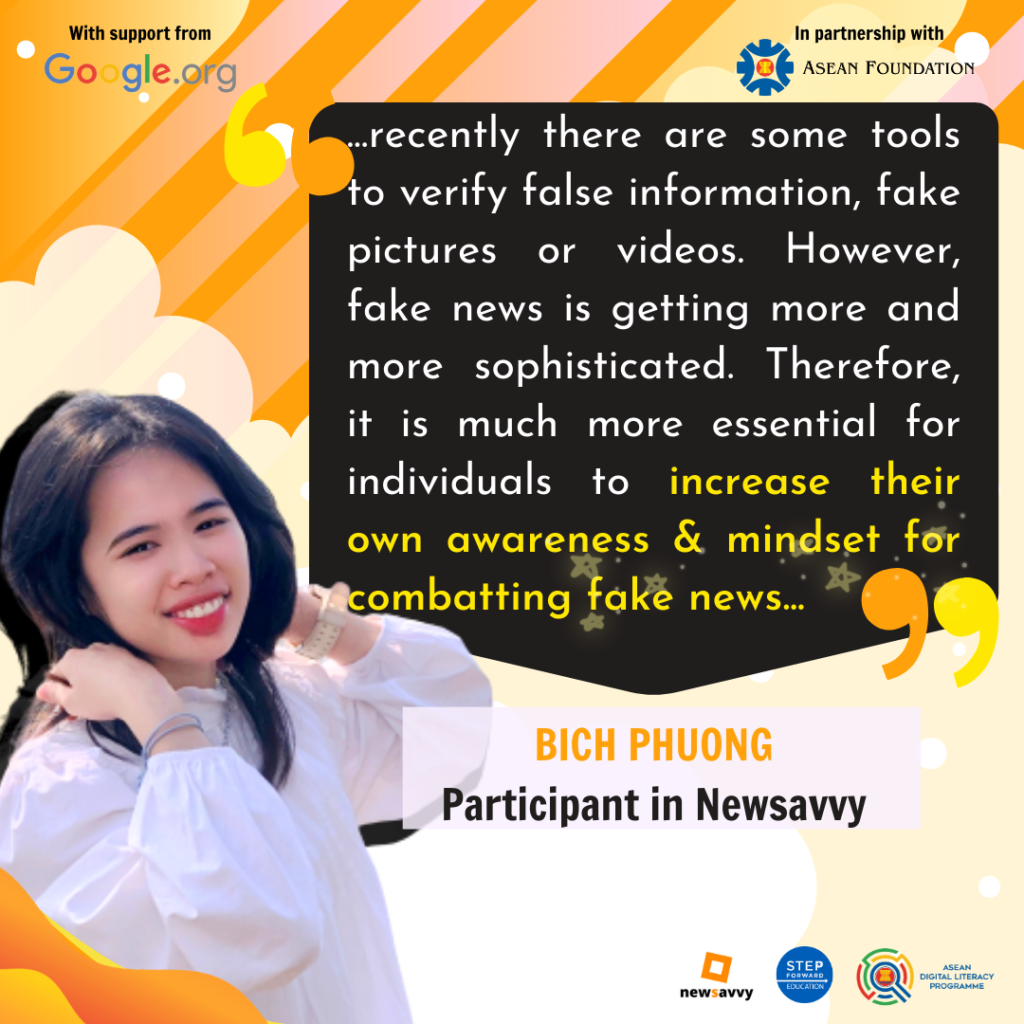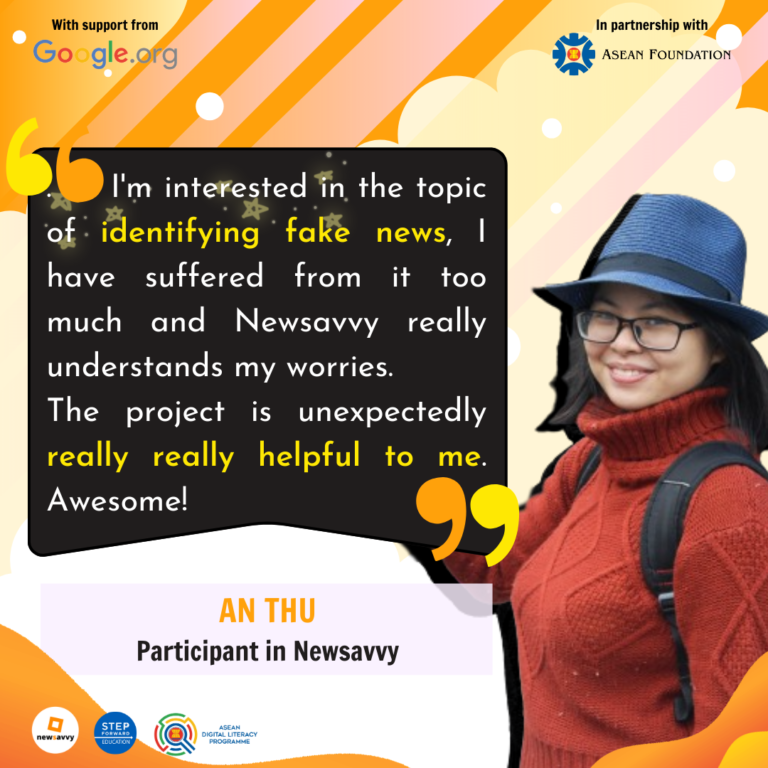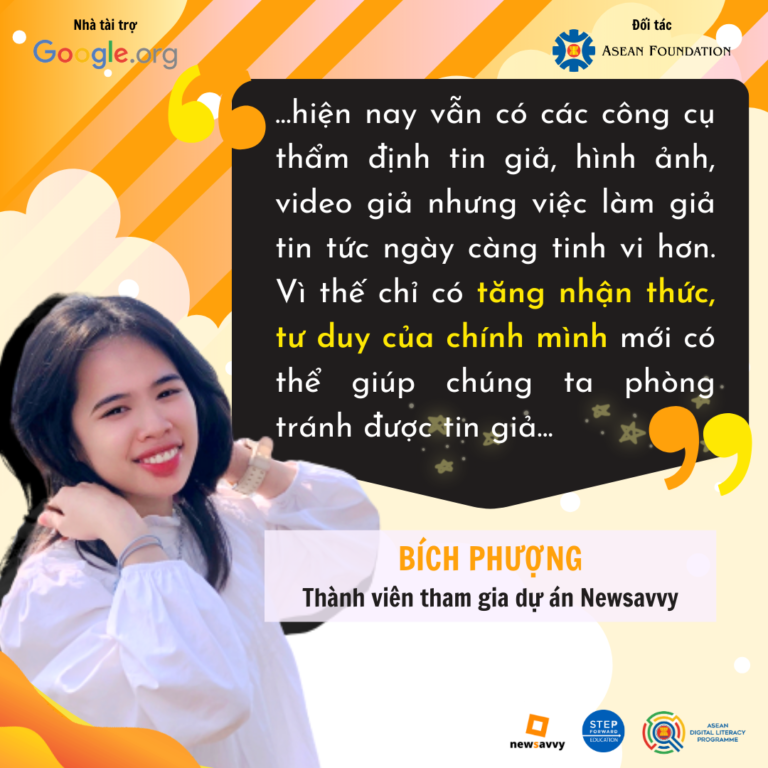Bich Phuong: I was a victim of cyber scam
I often read news on digital platforms but I don’t really know how to recognize false information. Therefore, I have been led by them many times. There was a time when some of my personal information was stolen and someone used it to threaten me.

Thanks to participating in the Newsavvy program, through Mr. Cao Tri’s sharing, I have grasped the concept and types of fake news.
For example, false information is often caused by errors in the process of receiving input information, due to occupational accidents or maybe the lack of specialized knowledge from reporters and journalists.
So when reading, we should read articles’ content carefully, not just the title or chapeau (1).
To check for misinformation, we can cross-check different newspapers and information sources, and often unverified information will have the following headings “According to initial information, from [person A, B…], etc.” (2)
Let’s check the domain names of the newspapers (3). Normally, trustworthy news websites won’t take the same domain name as other sites because they don’t want their readers to be confused.
Additionally, taking a close look at the apprearance and font of the newspaper sites (4).
Besides it is important for us to know more about human rights and the national law as a way to distinguish fake news (5).
In fact, recently there are some tools to verify false information, fake pictures or videos. However, fake news is getting more and more sophisticated. Therefore, it is much more essential for individuals to increase their own awareness and mindset for combatting fake news.
I have learned many useful things from Mr. Tri’s sharing. More than that, I really like the way he shared, very clear, with moderate speed and the content he shared was based on his real experience. So I found it very interesting, useful and did not feel too tired even though the learning time is quite long.
Sharing from Bich Phuong – a participant of the Newsavvy project






